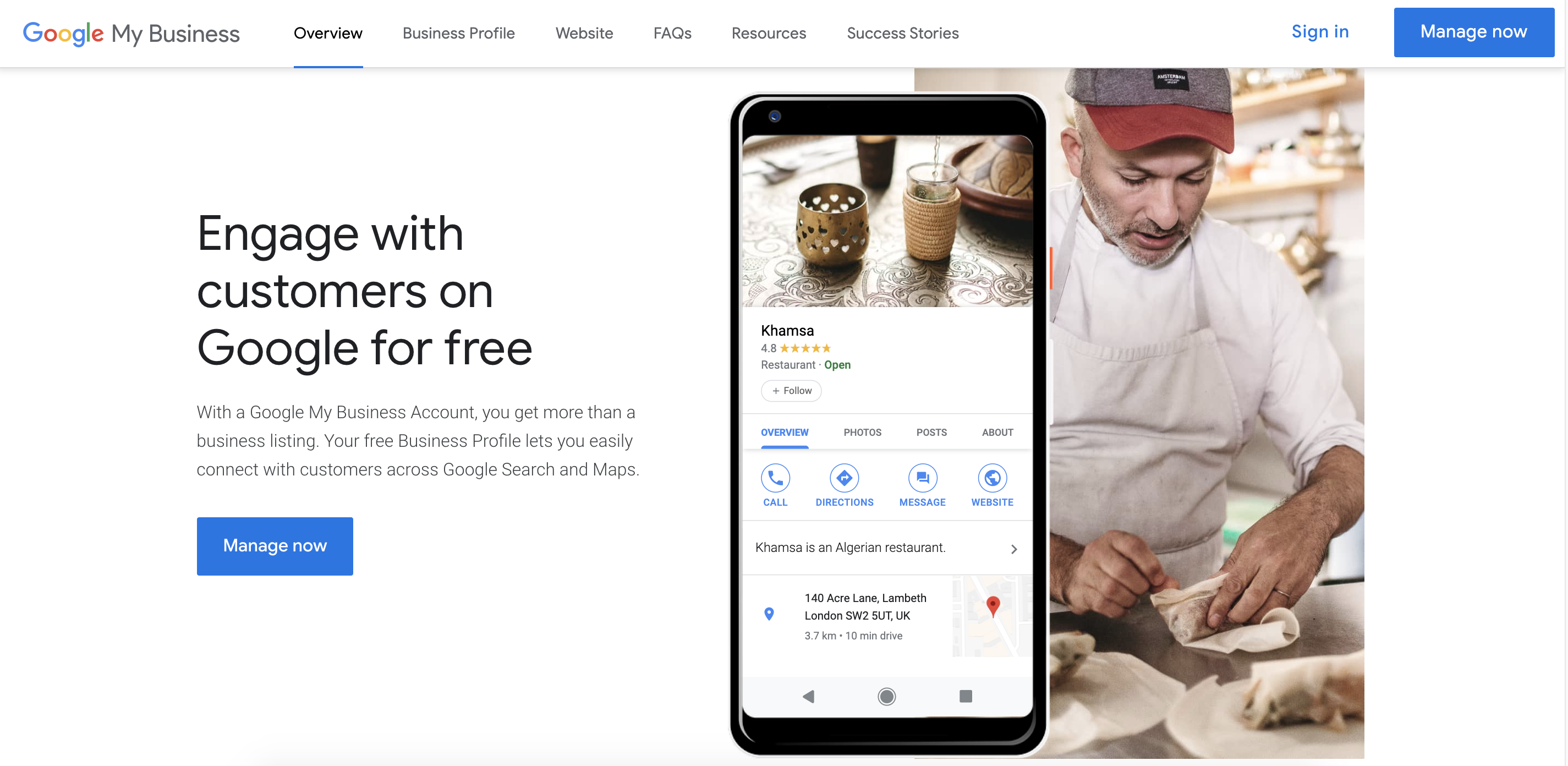The days of customers finding your pest control business in the Yellow Pages are over for business owners. Online search is king, with Google dominating as 97% of users head online to research local services. The rules have changed, so how can a pest control company keep up? Implementing an SEO (search engine optimization) strategy can help your pest control company reach more customers online and get a leg up on the competition. Moz defines search engine optimization as “the practice of increasing the quantity and quality of organic traffic to your website through organic search engine results.” Simply put, a solid SEO strategy puts your company’s website in front of local users who are searching for terms related to your services by increasing visibility in search engines. Pretty important, right?
- So, Where Do You Start?
- Google Business Profile for Pest Control Companies
- Citations and How They Help
- Keywords for Pest Control SEO
- On-site SEO for Pest Control Companies
- Off-site SEO for Pest Control Companies
- It’s A Lot of Work
- Increase Profits Using Pest Control Software
- Benefits of Using PestPac for Your Pest Control Business
- Closing Thoughts
So, Where Do You Start?

Overall, the goal of most pest control companies is to have their website rank higher on Google so that potential customers realize their business can help solve their pest problems. While it’s clear to see the importance of an SEO strategy for your pest control company, not many people know where to begin or what to do. There are a few main factors that go into getting your website and content noticed by search engines and customers who are in need of assistance. Each of these factors is important on its own, but when done well all together, your SEO campaign will be in tip-top shape.
Local pest control companies must focus on each of the following in order to have their website and business get noticed in their communities with a proper online presence:
- Google Business Profile
- Citations
- Keywords
- On-site SEO
- Off-site SEO
- Citations
Why are each of these essential to a successful SEO campaign? We will dive into each topic, explaining how to make the most of each.
Google Business Profile for Pest Control Companies

Local SEO relies heavily on Google Business Profile (formerly known as Google My Business), as this platform has become more and more popular in search results. If you have ever searched for a service on Google and noticed a pack of three companies on the page with a map over them plotting their locations, this is known as a “map pack.” Having your business show up in this local map pack is ideal, and the way to make that happen is by optimizing your Google Business Profile page.
Optimizing a Google Business Profile page comes down to giving the customers the information they need and showing Google that you are a real company.
- It is important to have a description of your company; that way, people who stumble across your listing get a brief explanation as to who you are and what you offer. Description:
- Be sure to add the products or services your company offers for pest control; in this case, it’s pest control services. Google Business Profile allows you to add primary and secondary services, so get specific with the type of pests you serve and which are your specialties. Services:
- It’s extremely important to list your hours of operation. Make sure your customers know which days you are open and the hours they can reach you, and be sure to update these frequently during holidays or if your company restructures its hours. Hours:
- Personalized pictures of your company give visitors great insight into who you are and what you do. Take pictures of your staff, trucks, and even technicians out in the field. Show some personality! Images:
- It’s important to make sure to mark your business as a service area business that serves customers at their location. This will let you set a service area within GMB and help your listing have a shot at showing up in areas besides your main city or town. Service Area Business:
- One of the most important aspects of GMB is the customer reviews your company receives from customers. Reviews play a big part in rankings, and the more positive reviews you receive, Google will recognize you as a trustworthy company. Ask customers to submit reviews if they like your service, and even if they don’t, constructive criticism is always a way to improve. Receiving a bad review isn’t the end of the world, but it is important to respond to a negative review by showing empathy and the willingness to turn that upset customer into a customer for life. Reviews:
Continuously updating each of these when your company goes through any changes is extremely important. Having your Google Business Profile listing up-to-date and optimized shows Google and your customers that you are active and working hard to give them the smoothest possible user experience.
Citations and How They Help

Competition is fierce in your community, so you want to make sure your business name’s online presence in search results is everywhere. One very important way to do this is through citations. Citations are mentions of your business on the internet. Most citations should include the name, address, and phone number of your business, otherwise referred to as NAP.
Quite possibly the most important aspect of citations is that they are identical across all platforms and websites. This means that your name, address, and phone number should not differ from site to site so that there is consistency when site crawlers crawl the internet. If the citations do differ in each location, Google will get confused, and your local SEO strategy for pest control won’t be as complete.
By getting your company’s information out on a number of sites, you not only create awareness for your business but also show Google that your business is a legitimate company. To get a handle on citation building, you can look into these tools and providers:
Keywords for Pest Control SEO

Your local SEO campaign revolves around the words or phrases that people will be searching for in order to find your type of business and services offered. In other words, the keywords that you target on your site and in your content are extremely important, as they essentially affect your conversion rates and click-through rates. If you don’t know what the search intent might be and you target the wrong keywords, then you aren’t maximizing your potential visitor base. That is why doing keyword research for relevant keywords is an essential part of your local SEO campaign. You can do this using popular keyword research tools.
Let’s say your pest control company is located in Las Vegas, Nevada. What types of pest services do you offer? What towns, other than Las Vegas, do you serve? Do you know the surrounding towns that give your company the most business? Do you know what services bring in the most leads?
All of these questions are a part of the keyword research process, but the answers to these questions might not be as obvious as they sound. That is why keyword research is vital to a successful SEO campaign. One great way to start your keyword research is by checking out your competitors and seeing what they are targeting. If they are having success going after keywords like “bed bug control Las Vegas, NV,” then you know people are searching for that type of service.
Another great way to find great relevant keywords is by using keyword tools like Google Keyword Planner, Moz, or SEM Rush to research what your customers are searching for. Start small in terms of the number of keywords you focus on, as it will be quicker to get a few things ranked than to try and rank for everything at once.
By using these relevant keywords in your content and on your site, you can begin to grow a customer base. Getting your keywords into your content effectively is the tricky part, which brings us to how you can optimize your on-site SEO.
Get Started With Pest Control Software!
On-site SEO for Pest Control Companies

On-site, or on-page SEO, is critical to an effective SEO campaign. Basically, on-site SEO is the practice of optimizing content on both pages and blogs, making sure everything on your site is done properly and correctly. What must be optimized?
- Title tags
- Meta descriptions
- URLs
- H1’s and H2’s
- Images
- High-Quality Content (Relevant Content for relevant traffic)
Let’s dive into the importance of each.
Title Tags
Title tags must be on each important page of your site. The title tag is blue wording you see in Google searches, explaining what the page is about. Make sure your title tag makes sense, relates to the content on that page, and has the correct pest control keyword at the beginning of the title tag. In addition, be sure to write a title tag that will get the attention of your audience, ensuring they will click through to your site. Generally speaking, if a title tag has a keyword that matches what someone searches for and also stands out from the rest, it can make them more likely to click through. It is recommended that a title tag is between 50 and 70 characters; that way, important words do not get cut off in the search results.
When it comes to local search, there are a few factors that are important to have in a title tag. After finding the correct keywords, it’s important to utilize them correctly and target not only the right keyword but the right area as well. Local SEO doesn’t necessarily get a lot of search volume, but there is a lot of competition when competing for the top spot on Google, so getting the right keywords in your title tags is vital.
Meta Descriptions
A meta description is a little blurb underneath a title tag in search results. By explaining what the page is about in 160 characters or less, potential customers can be persuaded into clicking on your page if the description catches their attention. Be sure to include the targeted keyword in that description, as a searcher is more likely to click on a page that has a description geared toward their search intent.
URLs
While URLs don’t necessarily get your page to the top of page 1, they certainly help users understand what that page is about. No one likes to look at a URL that is full of random numbers and letters, as that not only looks messy, but it provides no insight into the content that will be on that page. When creating URLs for your pages, be sure to have them make sense and try including some keywords.
For example, if you have a page dedicated to your termite control services, make your URL something like this: www.domain.com/termite-control-services. Just by looking at the URL, users can tell what the page is about. If the URL reads www.domain.com/pest-control-services, users might think this is a more general page, and since they are looking for a specific service, they might not click it.
Clean. Focused. Descriptive. It’s as simple as that.
H1’s and H2’s
To put it simply, the H1 tag is the most important tag on your pest control website’s important pages. The H1 is essentially the title and heading of the page, so make sure it is to the point and includes your targeted keyword. Pest control companies will most likely have many pages explaining the types of services they offer and the locations they serve, so ensuring each H1 is targeting the right service and area could bring many visitors.
While H2’s aren’t as important as H1’s, they are still necessary. No one wants to read a large block of text, and that’s where H2’s come in. In order to break up the content and explain what the next chunk of content is about, H2’s help guide the reader.
For example, let’s say you have a page on your site that is dedicated to the pest control services you offer in Las Vegas, Nevada. The H1 on this page would most likely be “Las Vegas Pest Control Services,” which helps explain what the content is about and targets the right keywords. The H2s on this page would most likely be the services that are provided. If you offer Residential and Commercial Pest Control, each of those services would be an H2 with content describing each service below the heading. This helps readers and site crawlers understand what the page is about and makes the page a lot more reader-friendly.
Images
Optimized images have become a lot more important over the years. While it’s always important to have related images on each page, it is even more important to optimize each image with title text and alt tags. When you hover over an image, there is a little box that shows up describing the photo, that is the image title tag. Alt tags, on the other hand, will appear inside the image container when the image cannot be displayed. Each of these is important for many reasons, the main one being that it helps screen reader devices help visually impaired visitors understand what the pictures are about.
Content
Yes, content. It seems so obvious, yet many don’t put the effort into writing quality pages. In order for your pages to be successful, they must be informational and provide value. Make sure you write your content to engage the reader. When it comes to your pest control company, write a bit about the history of the company, maybe include some information about the town you are serving, and then explain in detail the service you provide. On a page about bed bug control, write about the ways you can help customers get rid of unwanted pests. Do you fumigate the house or do you use a heat treatment? This is the type of information both readers and Google find important. Google wants to know you aren’t just writing to trick the search engines, you are writing to help your customers & website visitors find what they’re looking for
Utilize the tips that have previously been mentioned. Scatter target keywords throughout the content, and be sure to write your meta tags cleanly. Within your content, be sure to link out to other pages on your site that can also provide valuable information. This is called “internal linking.” If you have a page on your site dedicated to Residential Pest Control, that content might include the types of pest services you offer homeowners. If within the content you mention termite control, link out to your Termite Control page to help users navigate your site easily!
It is crucial to continuously optimize your site. Although on-site SEO is imperative, there are ways to help your site climb up through the rankings off-site as well.
Off-site SEO for Pest Control Companies

Google wants sites to be reliable and trustworthy. As a local pest control company, you want to improve your Expertise, Authority, and Trustworthiness, also known as EAT. EAT is more of a framework to simplify important things to strive for in marketing. While it is not a specific search ranking factor for Google, it’s a result of really good marketing and being a trusted source of information. While quality content creation combined with optimized on-site SEO is one way to increase your EAT, there are many ways to do so off-site as well. Off-site SEO, also known as off-page SEO, refers to the pest control SEO strategy and actions taken off of your website to improve search engine rankings. How can you get your local pest control company to improve its EAT? A few ways:
- Backlinks
- Guest Posting
- Social Media Promotion
Although it seems like there aren’t many off-site factors, each element carries a lot of weight. Let’s dig deeper:
Backlinks for Local Pest Control Businesses
Backlinks matter for all sites, especially local services like pest control. A backlink is when another website that is not owned by you, links out to your site. This means that if there is a blog written about bed bugs and your site provides quality content to help further drive home that publication point, they may link to your site so that readers can check out more information. While that sounds easy to get, it’s not so simple.
As a smaller company and website, a lot of outreach goes into receiving backlinks through link building. Not only is this time-consuming, but it can also feel like an uphill battle at times. When you receive backlinks from reliable publications and websites, it is a sign to Google that your site and content are full of value and trustworthy, which helps improve your site’s EAT value. The real question is, where can local businesses get valuable links? Pest control companies should reach out to the following:
- Industry Publications Look for top pest control publications. From Pest Control Technology (this is a backlink to PCT) to Pest Management Professional, getting a link from these sites would be great for your company’s website. While having a relationship with this company is one way to get a link, another way is by providing quality content, such as an informational blog on the field.
- Local Publications Whether it’s a local news network, newspaper, or even magazine, getting a link from a local outlet shows Google that you are a credible company in the community. Build a relationship with reporters and be sure to get involved in community events. Fundraising and sponsorships are a great way to help out your local community and getting a link from a local publication detailing the event is an added bonus.
- Local Organizations If you are a part of any local organization, having them link out to your site would be another great form of backlink. If you are a part of your local Chamber of Commerce, getting a link from them would be great. If you and a local organization team up to run an event, get a link on their site. There are many ways to be involved in the community and when teaming up with local organizations, asking for a link shouldn’t be all that difficult.
Guest Posting
Guest posting is similar to backlinks, except it is you writing for another publication. This is an important part of off-page SEO, as it shows people that you are knowledgeable about the topic at hand. So knowledgeable, that another site is letting you write about it for their readers. If you’re an expert in pest control, reach out to bloggers or local publications that write about similar content. Use this platform to educate the audience, but don’t try too hard to sell your products and services. If you create quality content with your company’s name attached to it, search engines will recognize this, and so will potential customers. Even better, you might reach people that otherwise never would have found your company.
Social Media Promotion for Pest Control
Social media has become a major part of business, especially in local pest control SEO. It’s no secret that social media can positively affect your business, but how do you gain traction when you have such a small and niche target audience?
One way is it helps you promote quality content. From blog posts on your site to community events your company is a part of, it is important to push this type of content out on social media to gain attraction. Boost posts on Facebook about “The Top 3 Fall Pests” in your area. This will not only have visitors checking out your site, but it might even get a few shares, resulting in new customers. Tweet about how you are participating in the local Relay For Life event, and you will have a booth with cool pens and keychains. This could result in a retweet from the Relay For Life account, which in turn can get your business name out in the community.
Share photos of your technicians out in the field! In general, people respond better to personal images rather than stock photos. Customized images allow potential clients to understand your pest control business a bit better, and even provide them with a better sense of what your company is all about. This creates a sense of security with shoppers, and trust is a major aspect of business, especially when technicians are arriving at people’s homes. Not to mention, personal and well-taken photos tend to look more professional.
Social media is free online advertisement and doing it right can make a big difference. Raise awareness for your business in any way possible, but don’t just tweet or post anything. Make sure the content you put out there is full of valuable information and be sure to show what your business is truly about.
It’s A Lot of Work

SEO differs for each type of industry and market. Pest control SEO is different than e-commerce SEO, which is different from HVAC SEO, and so on. The tips above are a great way to start a solid SEO campaign for a local pest control company. It’s imperative to be mindful of each effective tactic when you create a strategy for your site, as your campaign will be stronger when all cylinders are firing.
Luckily, Coalmarch by WorkWave has a wide range of SEO knowledge, especially in the pest control industry. We’ve worked with hundreds of pest control companies across the country, helping them grow through complete digital marketing campaigns. If you don’t want to spend hours creating a successful SEO strategy for your local business, contact us today and our Digital Marketing Specialists will do what they do best—help your company flourish.
Increase Profits Using Pest Control Software
Besides the appropriate implementation of good SEO practices, another powerful tool that can help pest control companies boost their visibility and profits is utilizing specialized pest control software like PestPac. These platforms are designed to streamline operations, improve efficiency, and provide valuable insights into your bed bug control business that can lead to increased revenue.
Benefits of Using PestPac for Your Pest Control Business
PestPac is a specialized software solution for pest control companies. Using advanced technology like PestPac can provide various advantages to your company, such as:
1. Increased efficiency: Streamlines various aspects of pest control operations, such as scheduling, billing, and customer communication. This can help businesses save time and resources by automating repetitive tasks and allowing technicians to focus on providing quality professional pest control service to customers.
2. Improved customer service: Businesses can easily access customer information, history, and preferences, allowing them to provide personalized pest control service and build stronger relationships with their clients. This can lead to higher customer satisfaction and retention rates.
3. Enhanced accuracy: Keeps track of all treatments performed, professional products used, and scheduling information, reducing the risk of errors or oversights. This ensures that technicians are following proper protocols and providing effective pest control solutions.
4. Reporting and Analytics: Offers valuable reporting and analytics capabilities, allowing businesses to track key performance metrics, identify trends, and make data-driven decisions. By analyzing this data, companies can optimize their operations, improve efficiency, and ultimately increase their bottom line.
Closing Thoughts
Mastering SEO for pest control companies is not just about improving your website’s visibility; it’s about creating a comprehensive strategy that integrates effective digital marketing practices with powerful tools like PestPac. By focusing on local SEO tactics, you can effectively reach your target audience and grow your customer base.
The blend of effective SEO strategies and specialized software like PestPac is crucial for pest control companies aiming to enhance their local presence and operational effectiveness. As you prioritize your digital marketing efforts, don’t forget to leverage the powerful features of PestPac to optimize workflow, improve customer interactions, and ultimately drive profitability. Ready to grow your business? Reserve your free consultation today!




